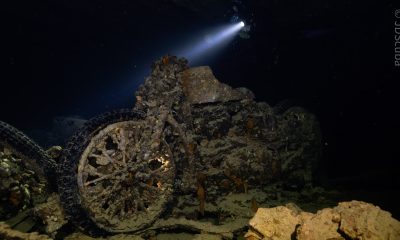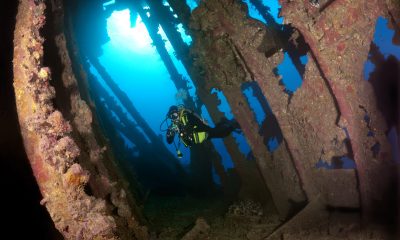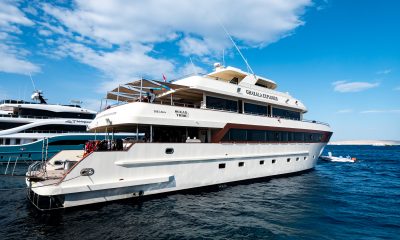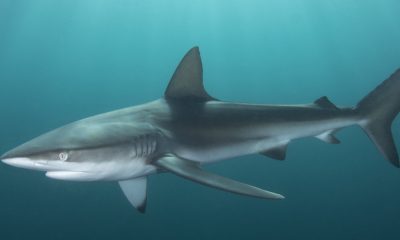News
Photo Gallery: Split-Shots
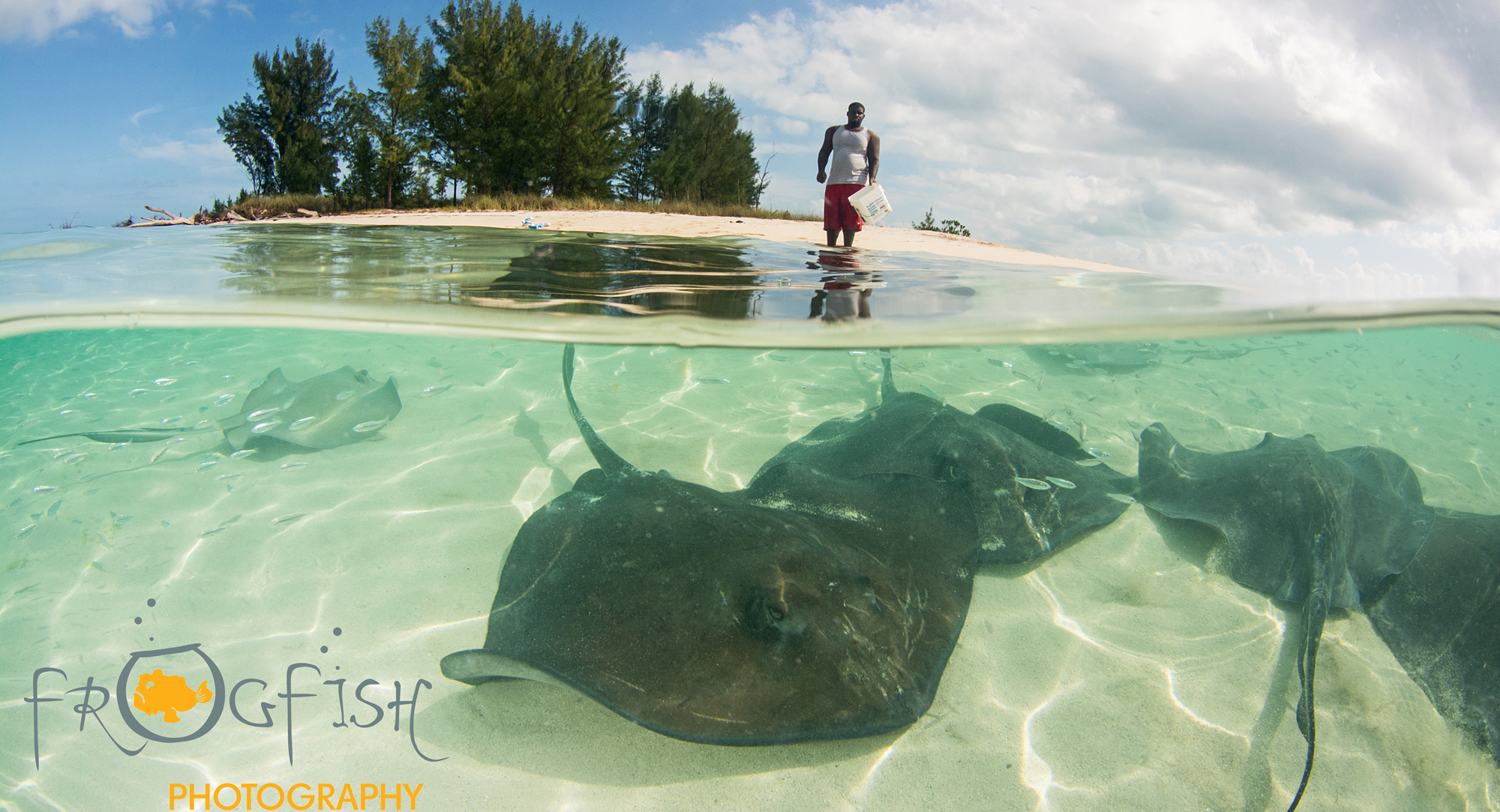
The second feature in our new Gallery series where we let the photos tell the story… This week, Nick and Caroline focus on photo technique with split-shots.
Split-shots or over-under shots are where some of the image is above the water and some below. It is a great technique most commonly done with a wide angle or fish-eye lens in a large dome port. To attempt these shots, it is best to wait for very calm water, to help you get a smooth transitional line from above to below. If you are shooting in the shallows on a sunny day, then you may not need to use strobes, but as the top half will be brighter, it is sometimes vital to have the strobes lighting your underwater subject. When you get the shot right, these can really enhance your portfolio of images.
Tips: Use as large a depth of field as you can (small aperture of say f16); try to move your camera gently so as not to create any bubbles around the port; dunk and shoot before the water starts to run down the dome and creates smears (you can even use spit to help improve this technique). For more from Nick and Caroline, visit www.frogfishphotography.com
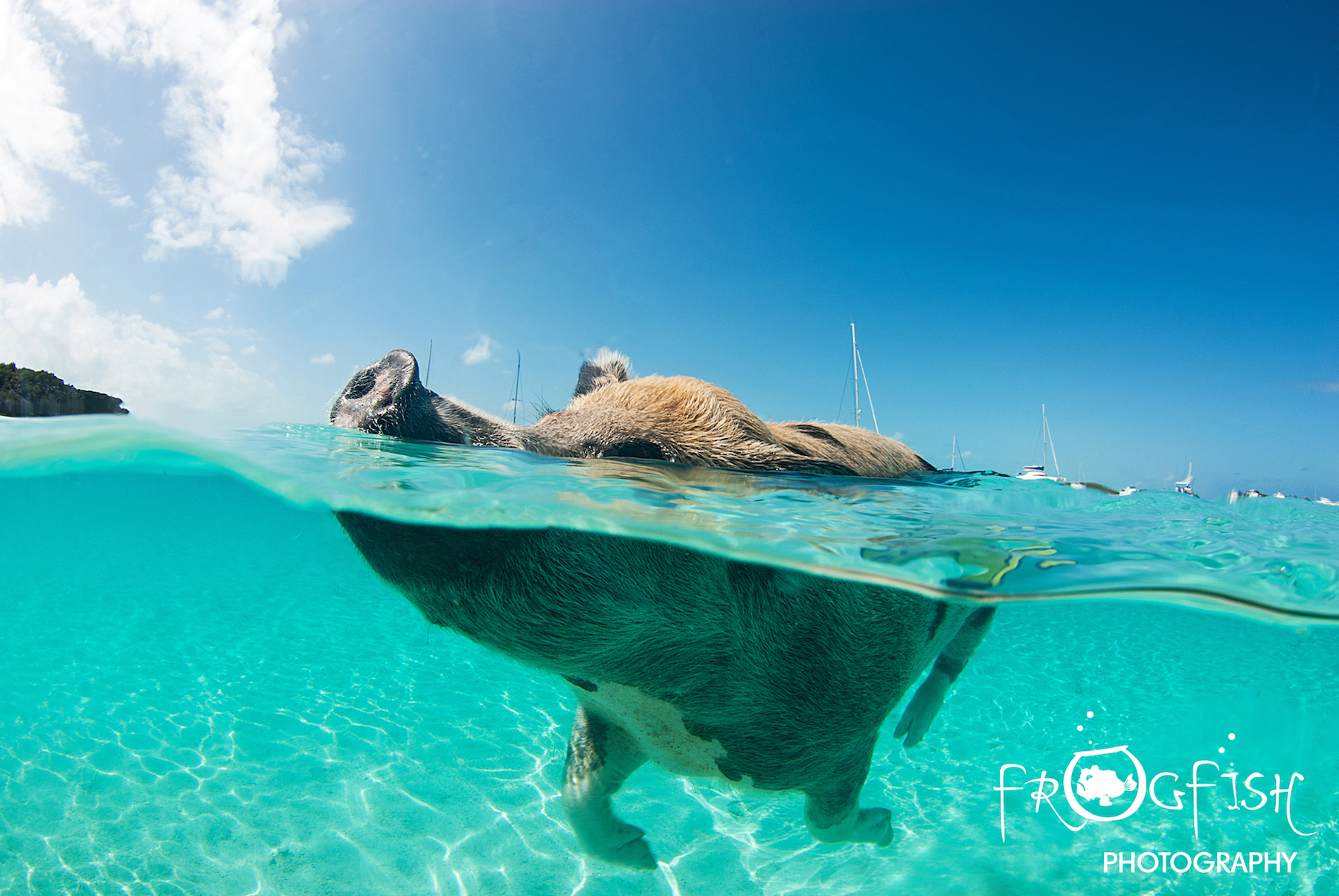
Image 1: Swimming Pig in The Bahamas
These wonderful swimming pigs in The Exumas in The Bahamas make the perfect split-shot subjects. The water is clear and calm and it is almost always sunny and the pigs swim around in shallow water. A perfect place to try this sort of shot, especially as they always swim with their snouts sticking out of the water like snorkels. Tokina 10-17 lens, f/13, 1/125, ISO 100. No strobe used.
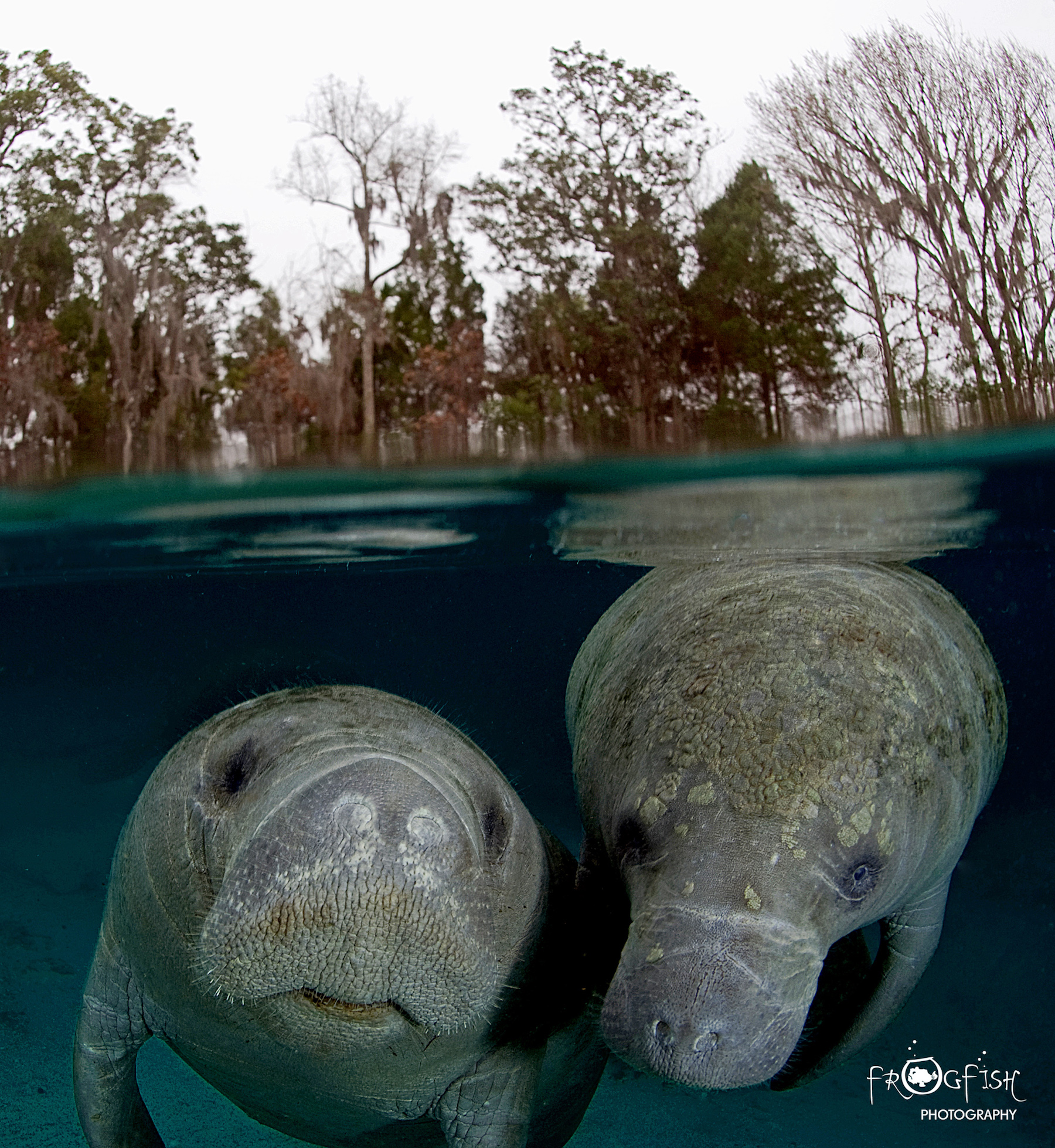
Image 2: Manatee Pair in Crystal River, Florida
This is another perfect destination and subject for the split shot. These gorgeous creatures love to swim up to you and will get in close enough to fill the frame. The location is lovely too with trees growing around this fresh water spring. Alas, we did not get nice sunny weather, that would have made this shot so much more appealing. Nikon 16mm lens, f/9, 1/80 ISO 400.
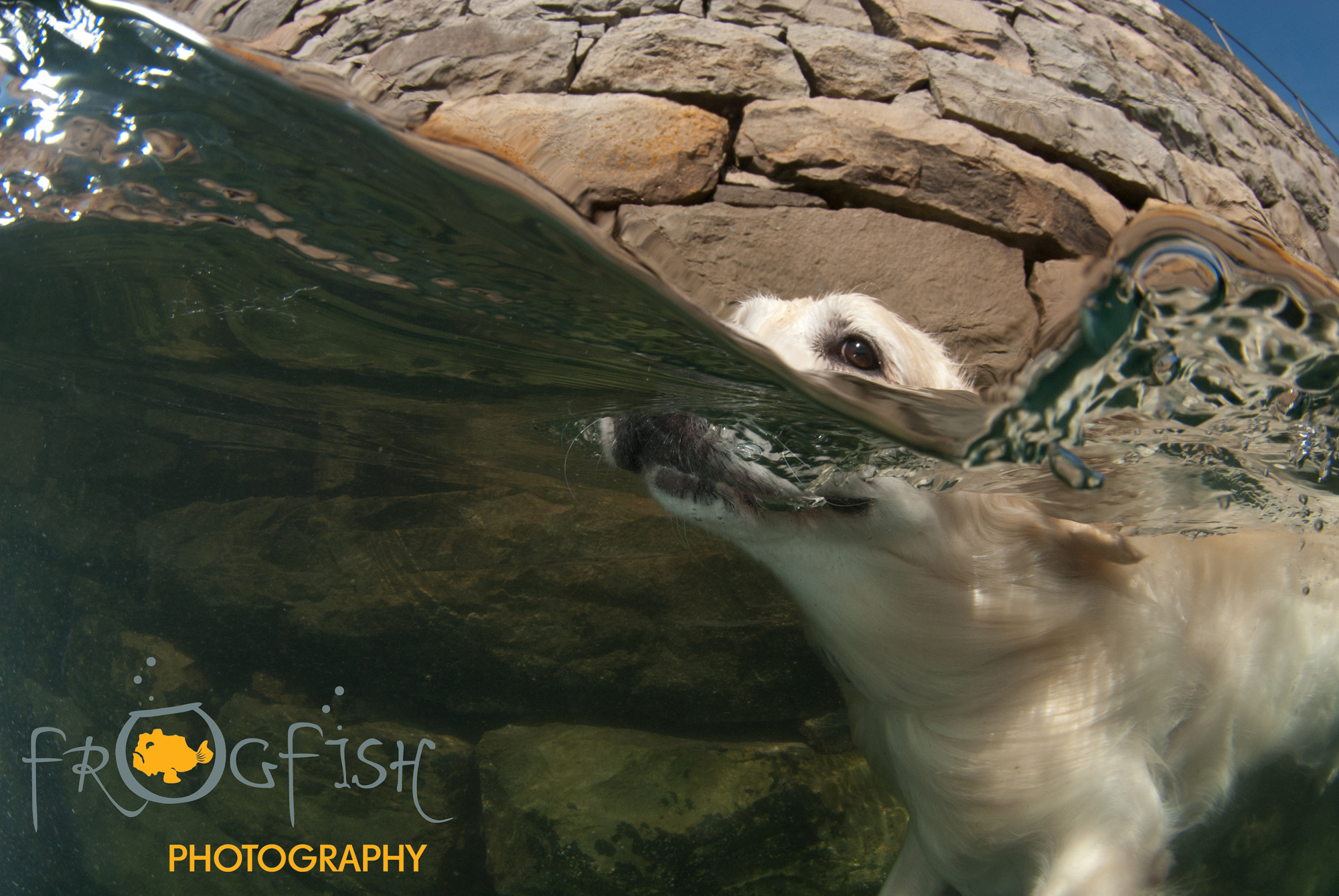
Image 3: Paddy Swimming
Paddy (or any other co-operative water loving dog) makes a perfect subject when you want to practice this technique! He loves to swim and can be called in (or tempted with a ball) to get close to the camera. The sea conditions were not perfect, with some swell and waves, but we love this shot capturing just his eye out of the water as he swam along the stone jetty at Trefor Pier in Wales. Tokina 10-17mm lens, f/13, 1/400, ISO 320.
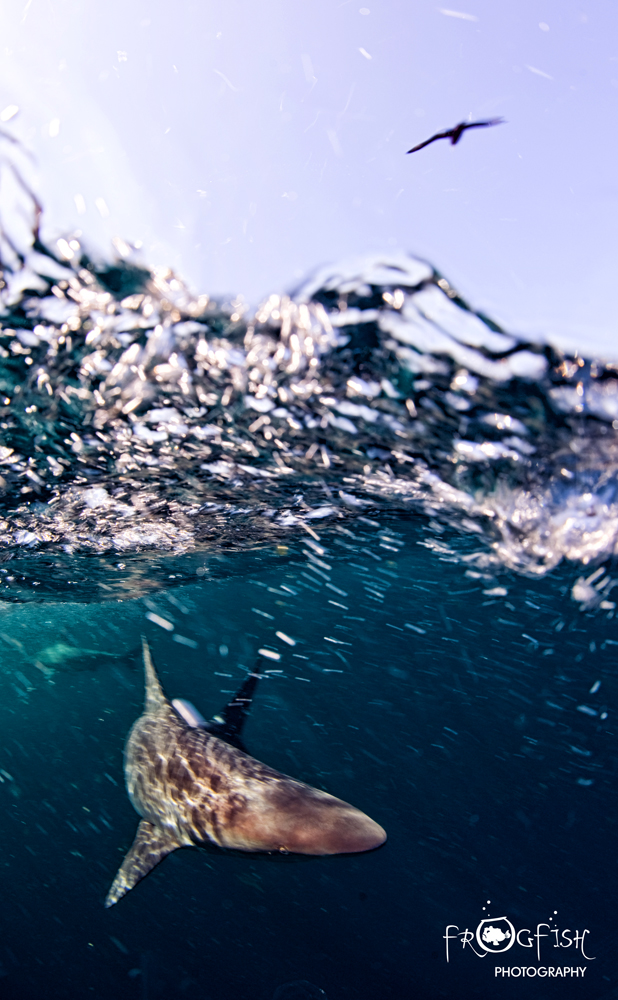
Image 4: Blacktip Shark & Bird
It is not often that you can get a shot of a shark swimming and a bird flying in the same shot! There is plenty that could be improved, but the opportunity was a fleeting one and the shot grabbed. This was taken at Aliwal Shoal in South Africa, where it is rare to get calm seas and split shots were the last thing on our minds. But it is a shot we love for that very reason. It is harder to hold the camera in the portrait orientation for split shots, but well worth practicing for these moments. Nikon 16mm lens, f/10, 1/160, ISO 200.
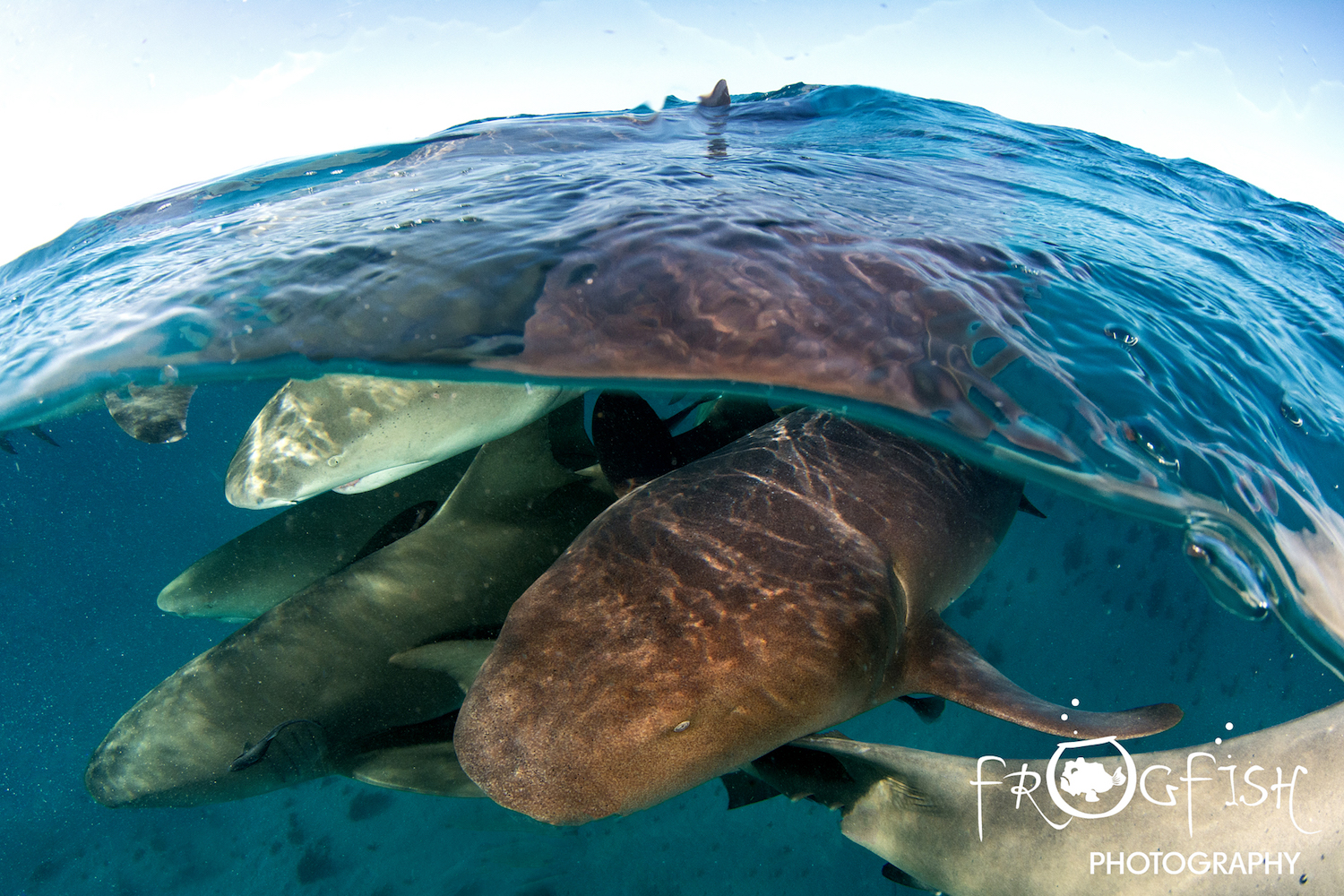
Image 5: Lemon Sharks in The Bahamas
This was taken lying on the platform on the back of the boat and dangling the camera in the water! There was quite a big swell and so it was hard to time when to hit the shutter button. The sharks stayed with us as we came up from an excellent dive and this was an opportunity we had to grab for the captain said we needed to head home. Tokina 10-17mm lens, f/18, 1/200, ISO 500.
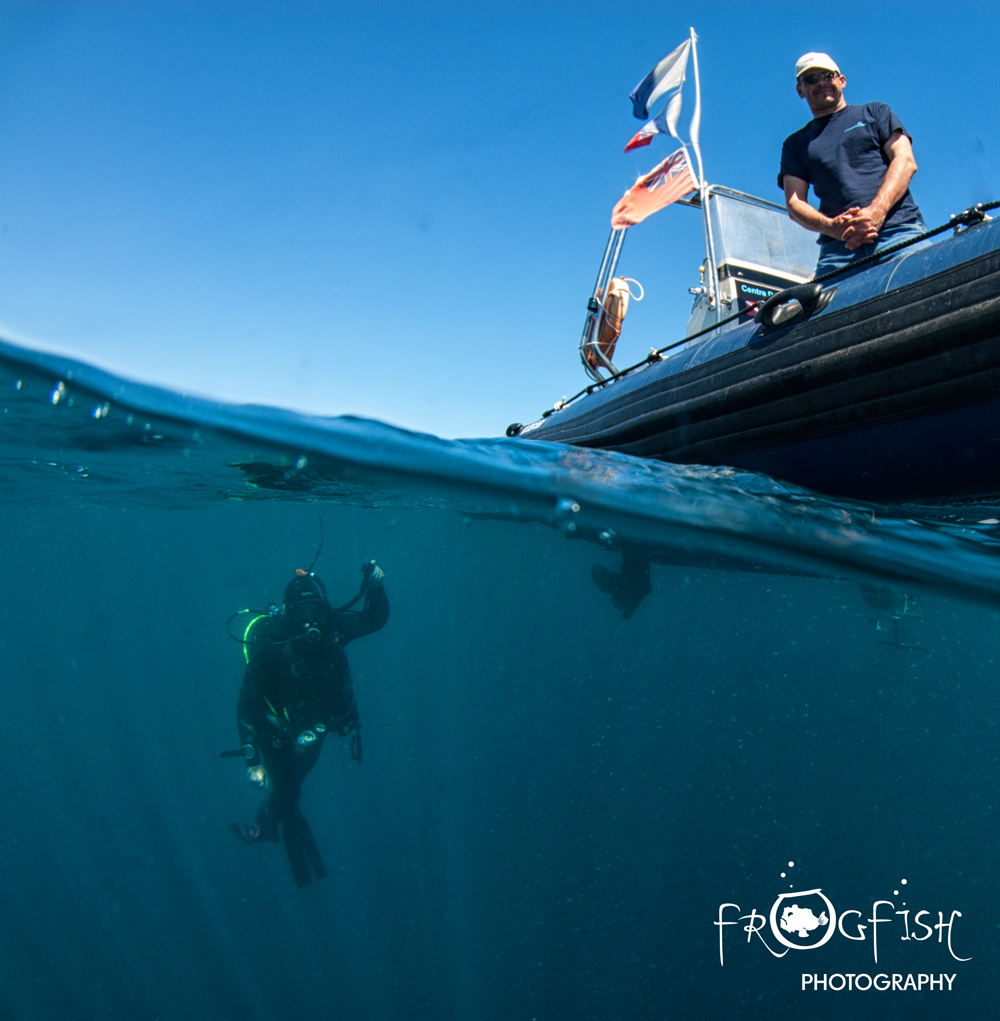
Image 6: Caroline Surfacing in France
A great way to capture the start of end of the dive is to get a split shot of the boat (and in this case boat captain) with a diver below. This shot was taken whilst diving in France on an epic road trip and shows Caroline just about to finish the dive. Nikon 16mm lens, f/11, 1/125, ISO 250.
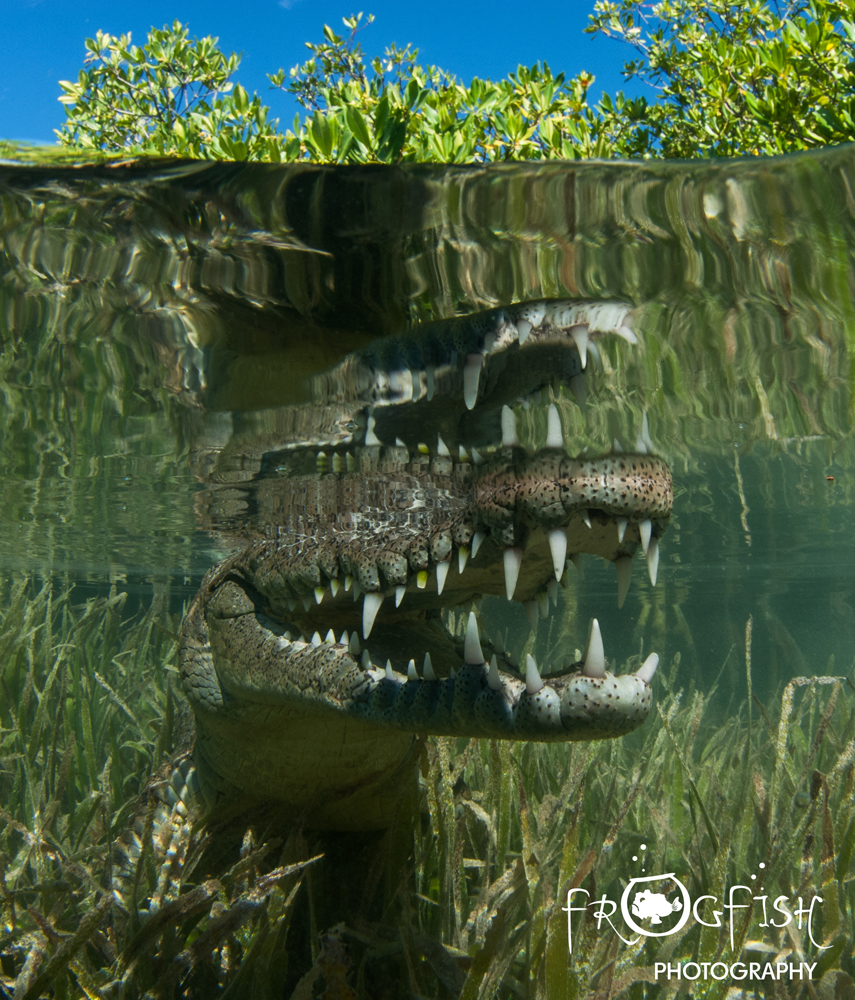
Image 7: Cuban Crocodile
A split shot does not have to be 50% above the water and 50% below. Experiment with how much you want to feature from under the water and at what angle. This shot if a very close-up portrait of a crocodile taken in Jardines de la Reina in Cuba. We wanted it to show both the underwater seagrass habitat as well as a little of the mangroves in the background. Tokina 10-17mm lens, f/16, 1/60, ISO 250.
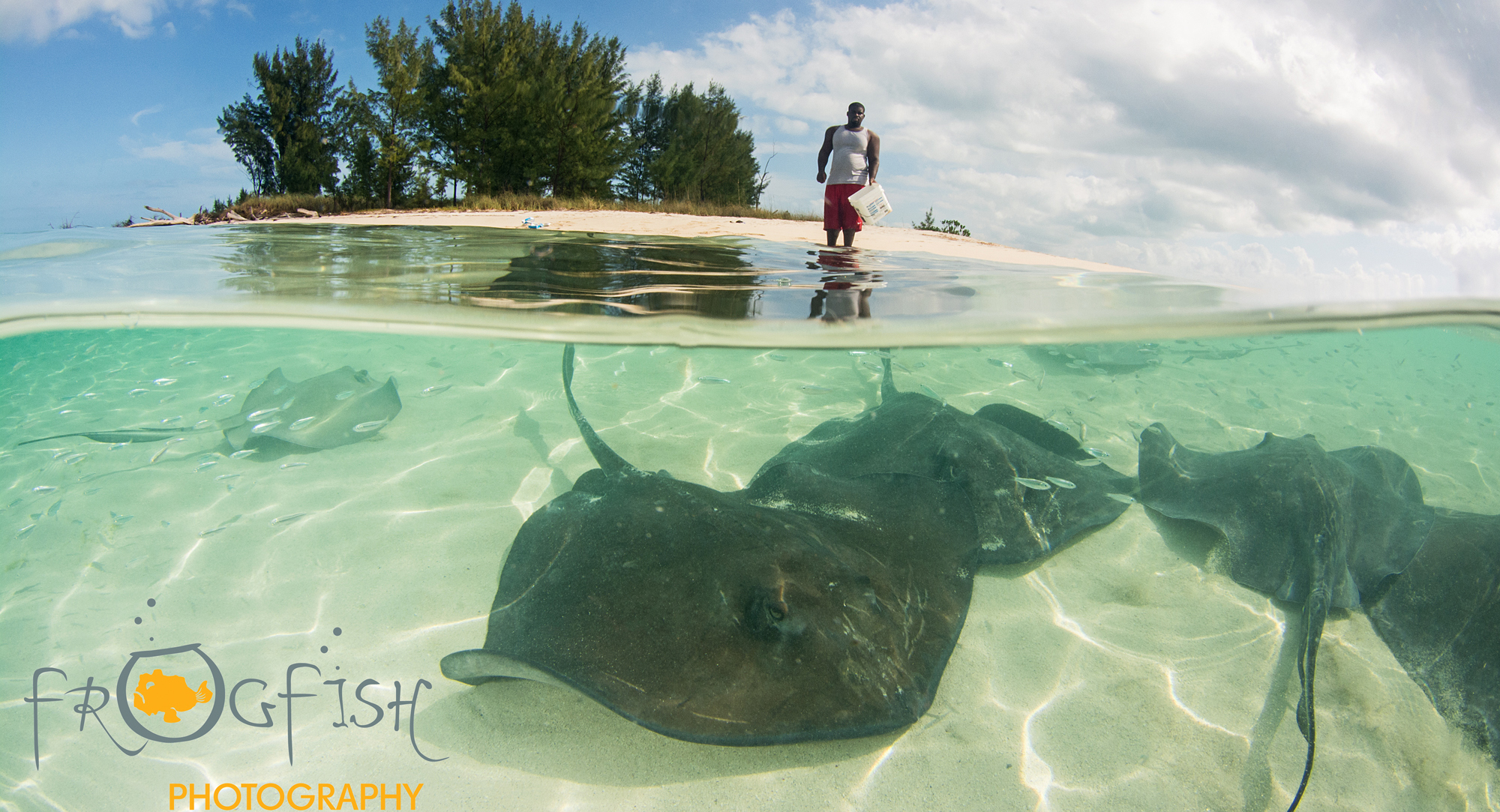
Image 8: Stingrays in The Bahamas
This shot was one we planned before getting into the water, with our guide standing on a deserted small idyllic island and stingrays in the shallows. The clam water and the ability to keep the glass dome dry before taking this shot all helped, as did the sunshine. Tokina 10-17mm lens, f/20, 1/200, ISO 400.
You can now get wide angle and fish eye lenses and domes for almost every underwater camera, from a GoPro to a top end SLR, so go out and try getting a split shot. They are very rewarding when they work out, but they do take a bit of practice! Why not let us know how you get on?
Blogs
EXCLUSIVE: Jeff Goodman interviews Mark Spiers, CEO of New Scuba Diving Training Agency NovoScuba
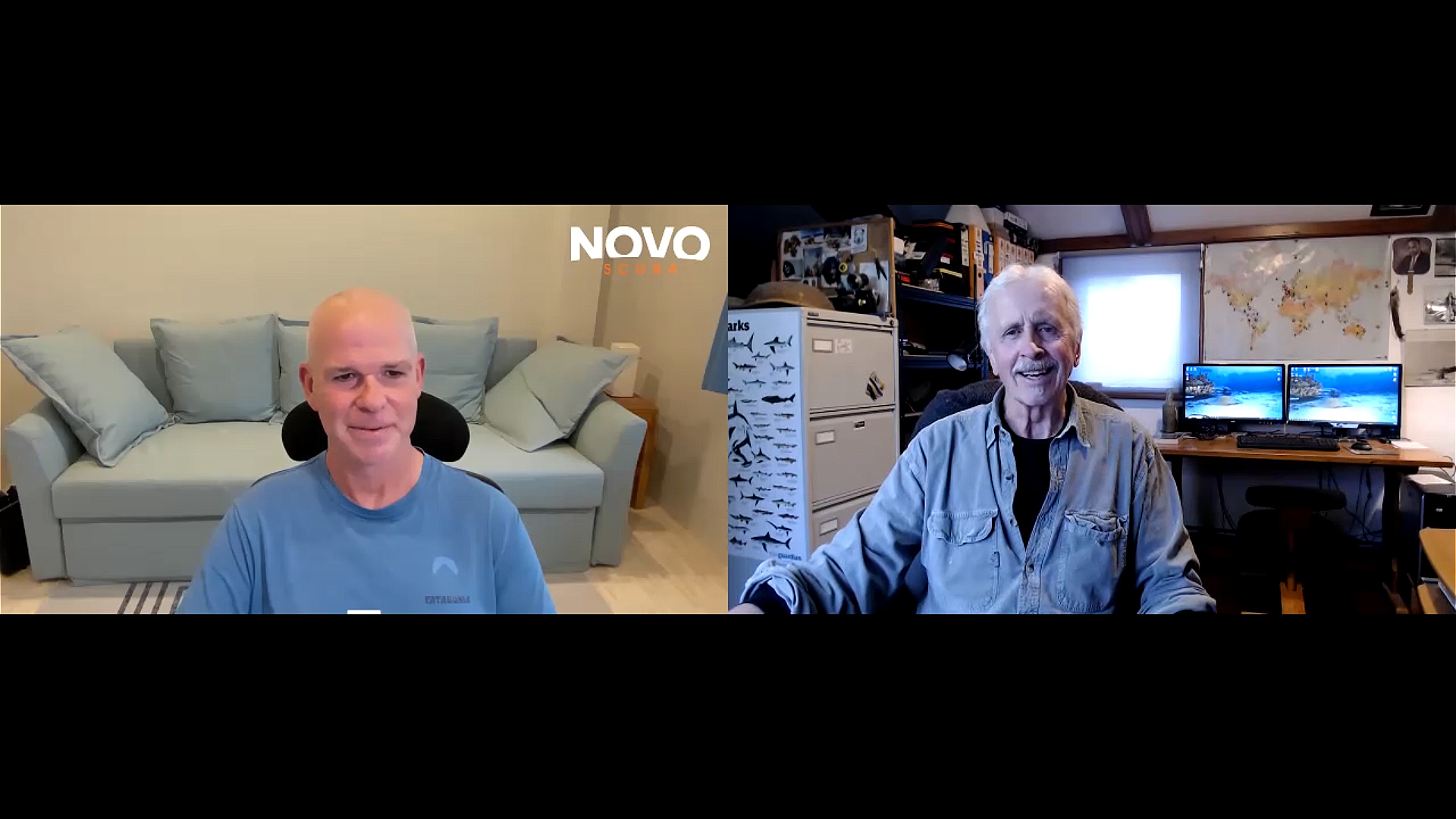
In a video recorded exclusively for Scubaverse.com, Jeff Goodman interviews Mark Spiers, CEO of new scuba diving training agency NovoScuba.
Find out more about NovoScuba at www.novoscuba.com.
News
Charting New Waters; NovoScuba Goes Global with the Launch of their Revolutionary Dive Training Agency!
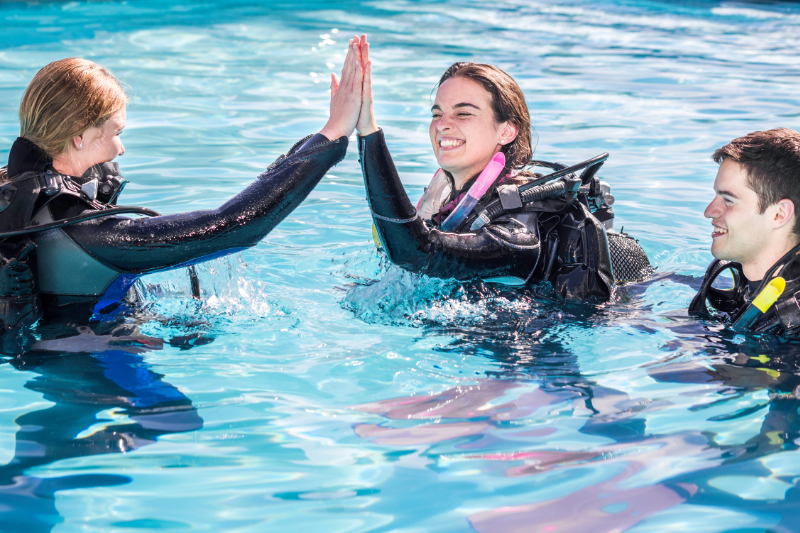
Discover a New Era of Dive Education: NovoScuba Brings Innovation to the Surface! Fully ISO Certified and Equipped with Cutting-Edge Technology.
 With a combined experience spanning over a century in the diving industry, a team of accomplished dive store owners, managers, and professionals unveils NovoScuba, a ground-breaking dive training agency poised to redefine the benchmarks of underwater education. Launching in May 2024, NovoScuba promises a revolutionary approach to dive training. Their vision is to make diving accessible to everyone, share success within the dive community and emphasise positive interactions with the planet.
With a combined experience spanning over a century in the diving industry, a team of accomplished dive store owners, managers, and professionals unveils NovoScuba, a ground-breaking dive training agency poised to redefine the benchmarks of underwater education. Launching in May 2024, NovoScuba promises a revolutionary approach to dive training. Their vision is to make diving accessible to everyone, share success within the dive community and emphasise positive interactions with the planet.
NovoScuba’s global debut marks a significant milestone in the dive industry. Driven by a vision to challenge convention and harness the power of technology, NovoScuba aims to revolutionise the dive training landscape through its innovative business model, which is digitally native, making it the most technologically advanced dive training agency to date.
“We recognised the need for change in the dive training industry and saw an opportunity to leverage technology, and redefine existing business models to create something truly innovative,” said Mark Spiers, CEO of NovoScuba.
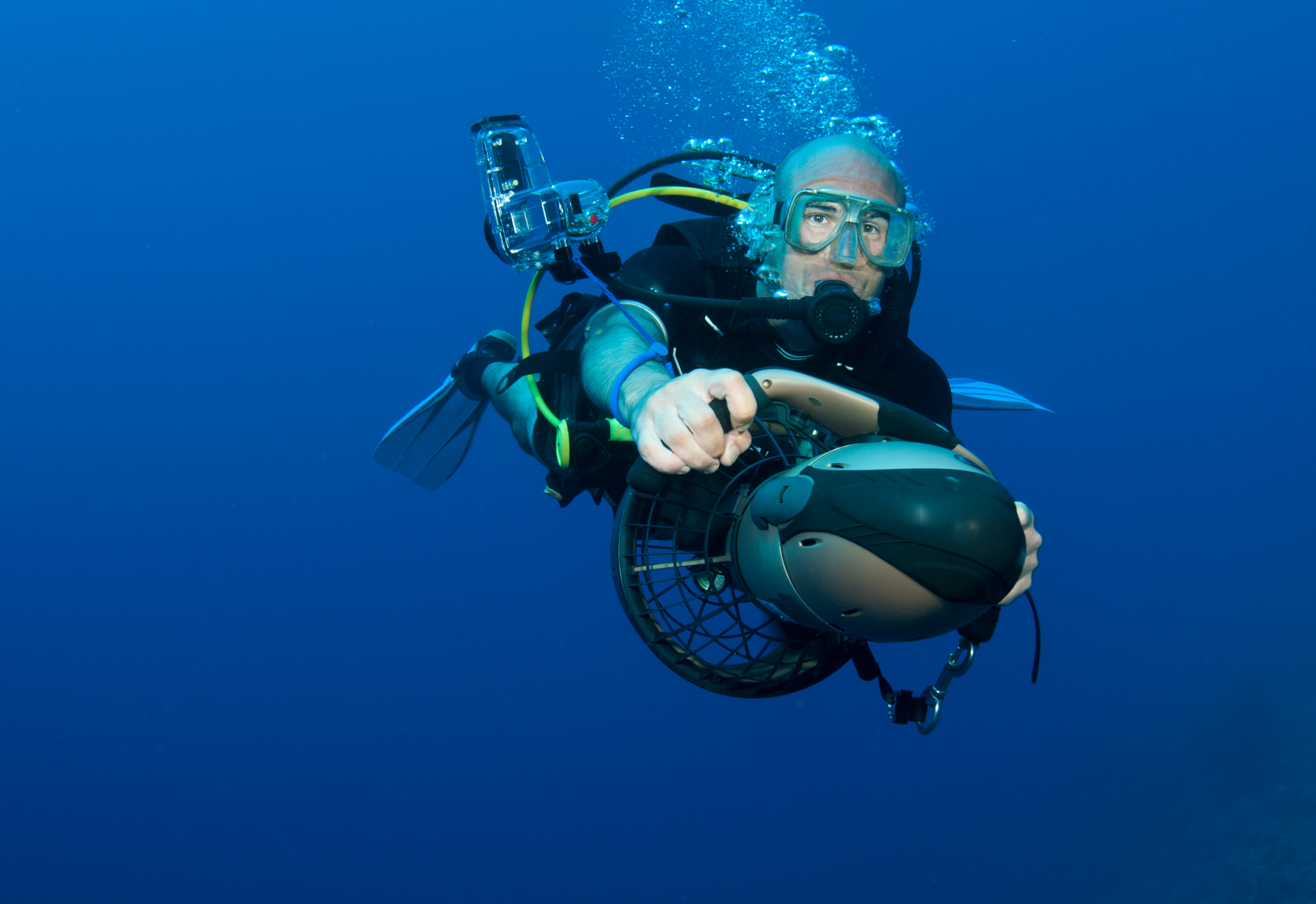
NovoScuba’s platform offers state of the art training programmes ranging from introductory up to professional diving, including various specialties. All programmes meet international standards and ISO certifications are in place. This commitment to shared success, accessibility and positive results for the planet, all at a cost effective and affordable level, is what will make NovoScuba stand out.
“Our deep understanding of traditional pain points for the industry, combined with our digitally native approach positions NovoScuba as a game-changer in dive education. Offering unparalleled initiatives such as student subscription, open access to all course materials, pay as you certify, no stock required, monthly membership payments, payment in local currencies, one-click certifications, and membership freezing, NovoScuba is set to redefine the industry. Available in 13 languages, at launch, the NovoScuba courses are written for the modern divers, with a focus on up-to-date content, interactive learning, and an engaging platform,” Mark Spiers concluded.
NovoScuba is challenging a change in the industry, redefining established traditional systems, and ushering in a new standard of excellence, support, and partnership. Their collaborations with dive stores, pros and underwater enthusiasts won’t demand exclusivity, prioritising earned loyalty, and an understanding that their Member’s success is key to their own.
NovoScuba
Diving Redefined.
-
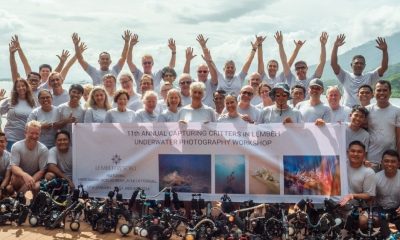
 News3 months ago
News3 months agoCapturing Critters in Lembeh Underwater Photography Workshop 2024: Event Roundup
-
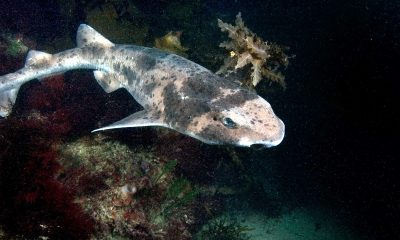
 Marine Life & Conservation Blogs3 months ago
Marine Life & Conservation Blogs3 months agoCreature Feature: Swell Sharks
-
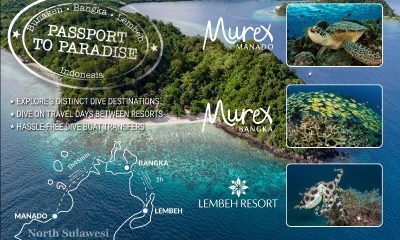
 Blogs2 months ago
Blogs2 months agoMurex Resorts: Passport to Paradise!
-
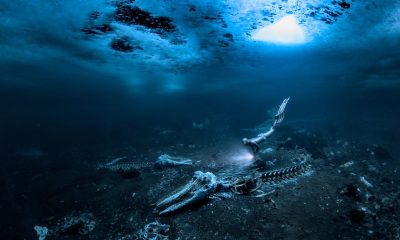
 Blogs2 months ago
Blogs2 months agoDiver Discovering Whale Skeletons Beneath Ice Judged World’s Best Underwater Photograph
-
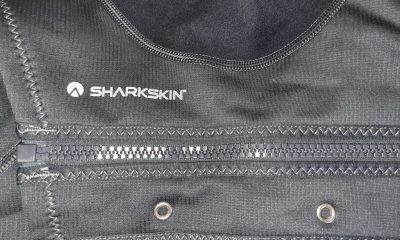
 Gear Reviews3 weeks ago
Gear Reviews3 weeks agoGEAR REVIEW – Revolutionising Diving Comfort: The Sharkskin T2 Chillproof Suit
-

 Gear Reviews3 months ago
Gear Reviews3 months agoGear Review: Oceanic+ Dive Housing for iPhone
-
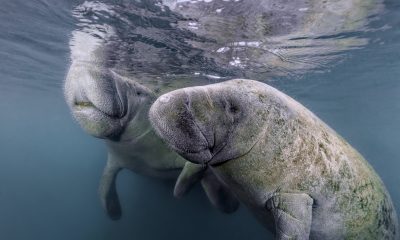
 Marine Life & Conservation2 months ago
Marine Life & Conservation2 months agoSave the Manatee Club launches brand new webcams at Silver Springs State Park, Florida
-
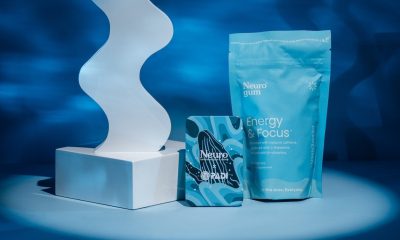
 News2 months ago
News2 months agoPADI Teams Up with Wellness Brand Neuro to Drive Ocean Change and Create a Blue State of Mind





